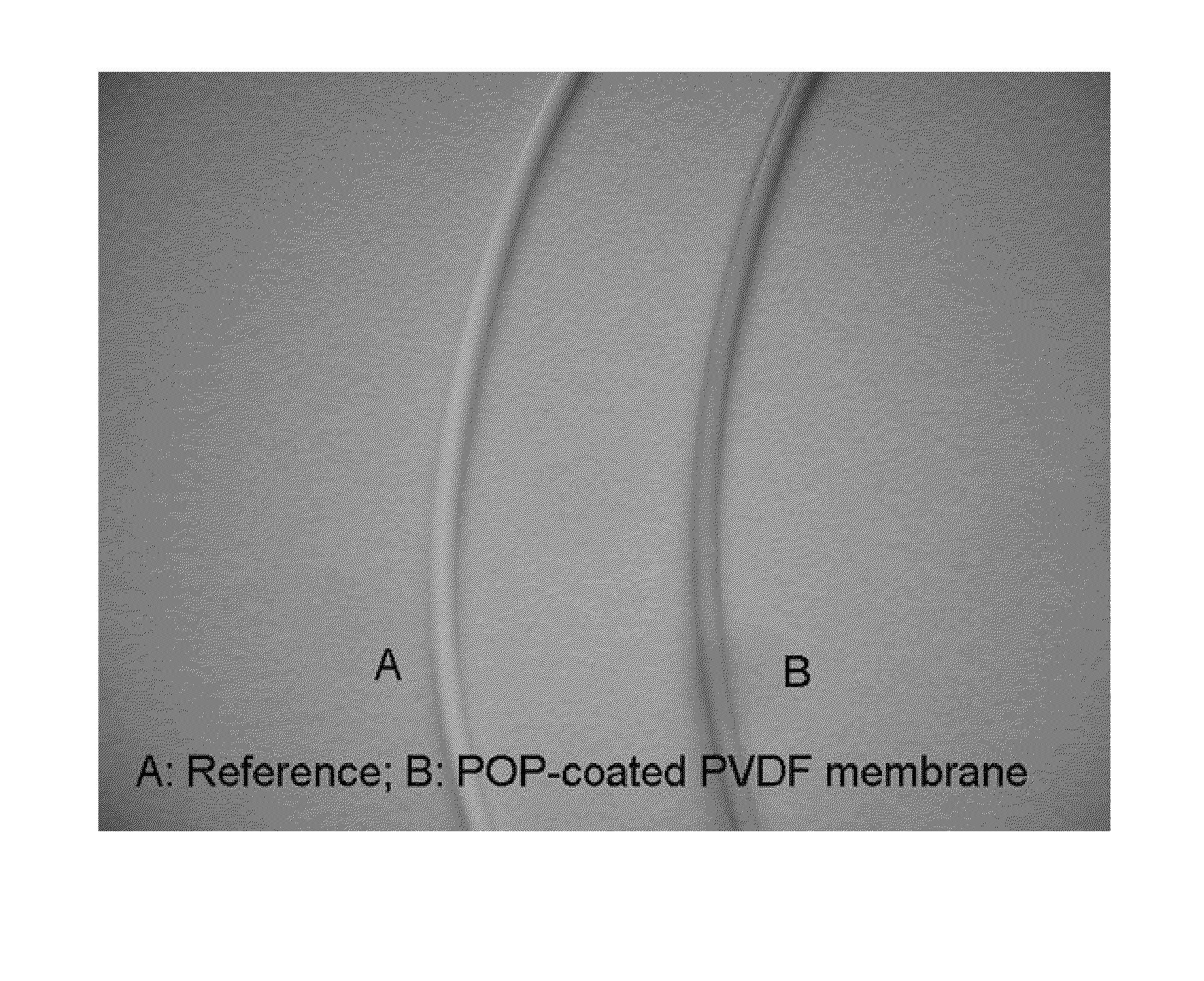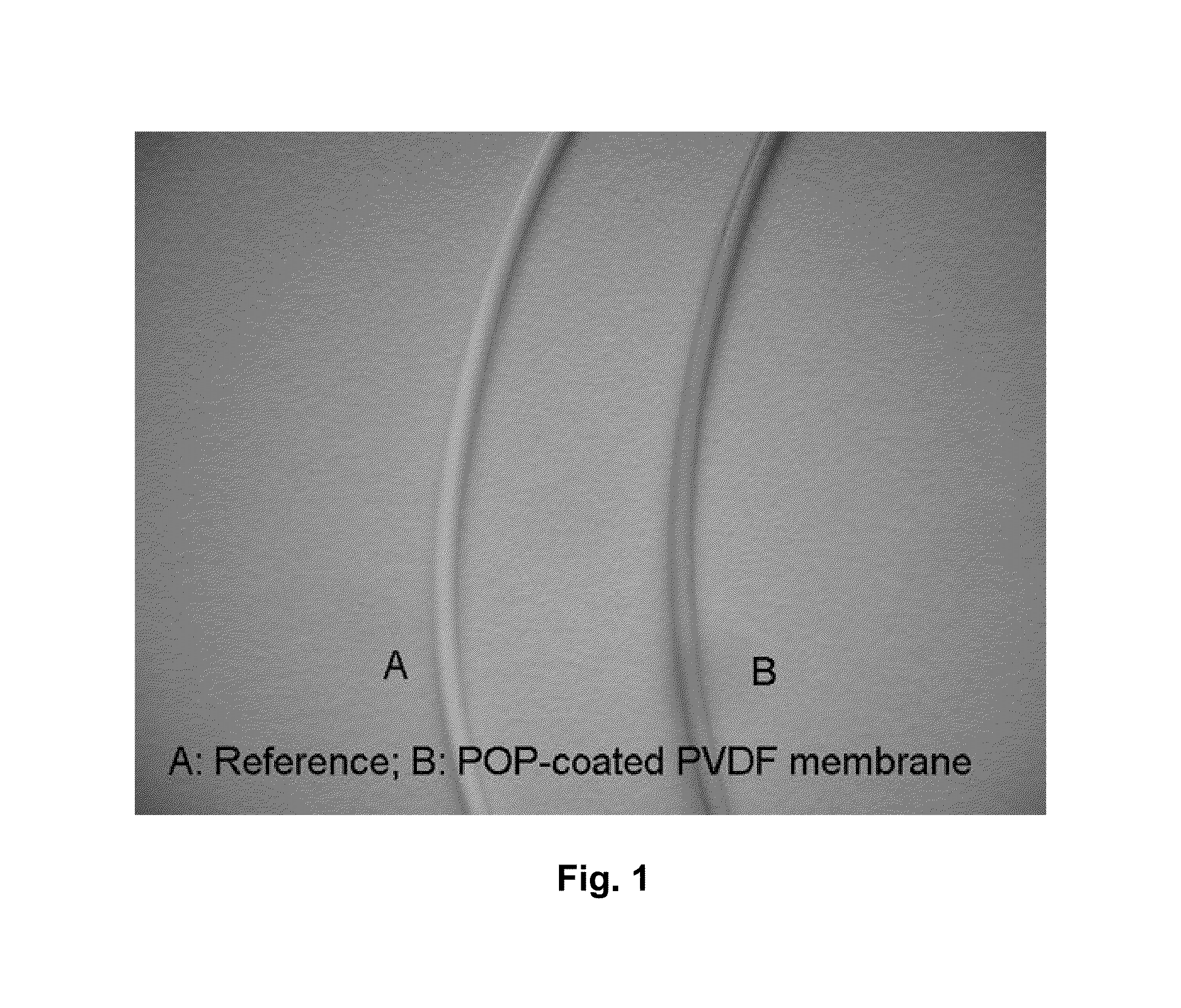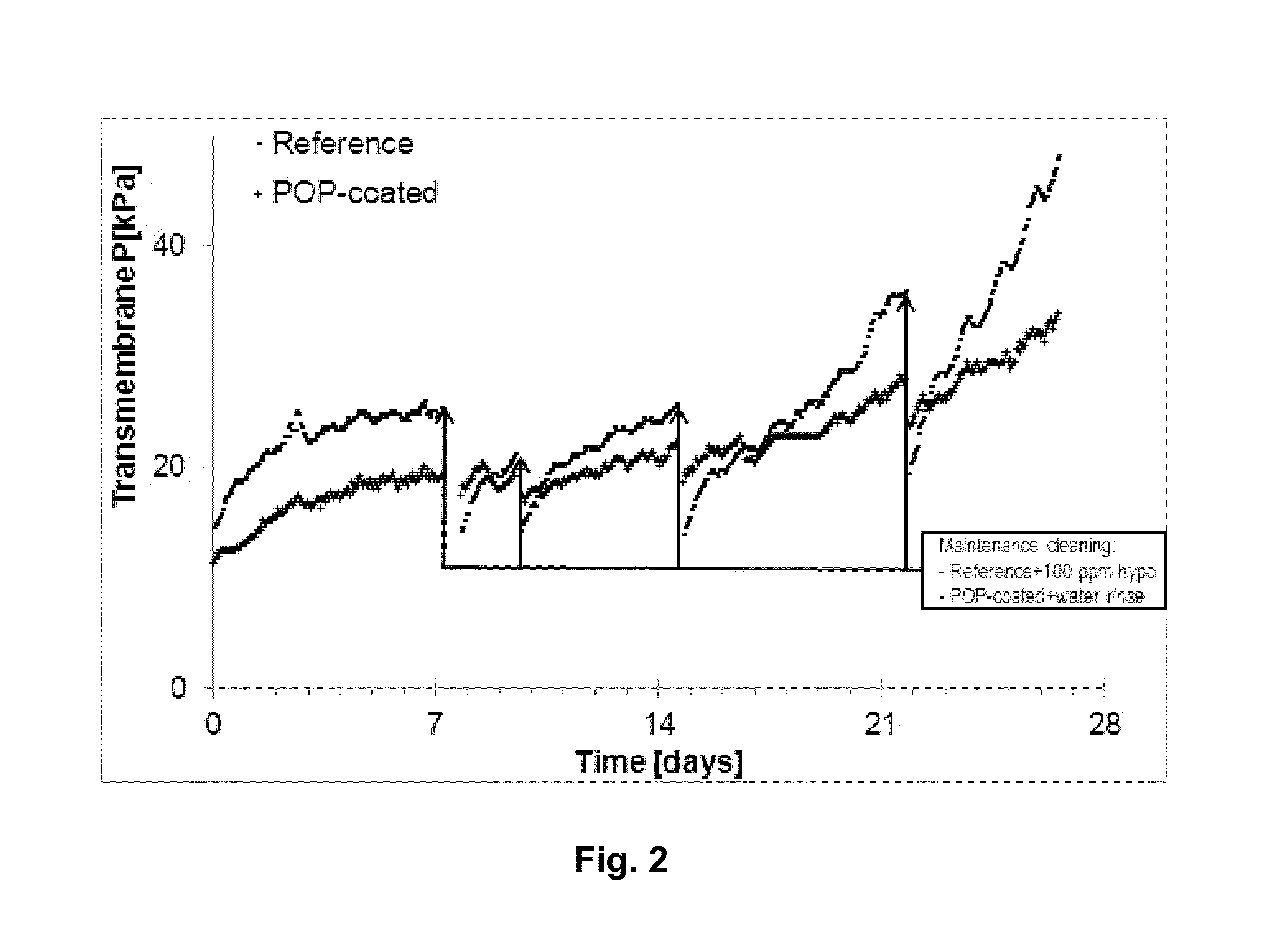Polyphenol-type polymer coating of filtration membranes
a technology of filtration membrane and polymer coating, which is applied in the direction of filtration separation, specific water treatment objectives, separation processes, etc., can solve the problem of coating oxidization
- Summary
- Abstract
- Description
- Claims
- Application Information
AI Technical Summary
Benefits of technology
Problems solved by technology
Method used
Image
Examples
experimental example
[0049]A coating solution was prepared by dissolving 42.0 g of NaHCO3, 53.0 g of Na2CO3 and 10.0 g of catechol in 10 litres of purified water. Two modules of hollow fiber PVDF membranes, having an outer skin functioning as a separation layer, were made having 0.9 square meters (9.8 square feet) of membrane area. One of the modules was coated with poly(catechol) by immersing it in the solution for 6 hours while 2 standard cubic feet per minute (SCFM) of aeration was applied. The second module was left uncoated to provide a reference for comparison. The two modules were operated in a membrane bioreactor system characterized by the parameters listed in Table 1.
TABLE 1Tank volume (Reactor)500litersMembrane tank volume250litersHydraulic retention time (HRT)3-6HoursMixed liquor suspended solids (MLSS) in ~8g / lbioreactor tankFood:microorganisms (F / M) ratio (Kg of~0.1-0.15COD / Kg of VSS)Organic loading rate (Kg of COD / M3) ~1-1.3Aeration rate2 SCFM to each moduleAeration sequence during filtra...
PUM
| Property | Measurement | Unit |
|---|---|---|
| Fraction | aaaaa | aaaaa |
| Fraction | aaaaa | aaaaa |
| Acidity | aaaaa | aaaaa |
Abstract
Description
Claims
Application Information
 Login to View More
Login to View More - R&D
- Intellectual Property
- Life Sciences
- Materials
- Tech Scout
- Unparalleled Data Quality
- Higher Quality Content
- 60% Fewer Hallucinations
Browse by: Latest US Patents, China's latest patents, Technical Efficacy Thesaurus, Application Domain, Technology Topic, Popular Technical Reports.
© 2025 PatSnap. All rights reserved.Legal|Privacy policy|Modern Slavery Act Transparency Statement|Sitemap|About US| Contact US: help@patsnap.com



